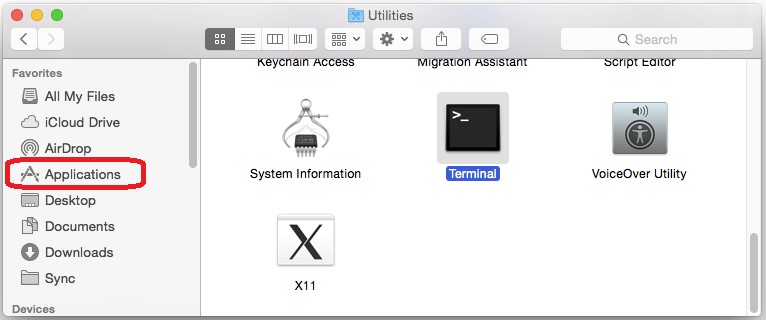

- Mac os sync folders update#
- Mac os sync folders plus#
- Mac os sync folders zip#
- Mac os sync folders mac#
The plan was to back up files in the Documents folder, which was fine, and the Google Drive folder, which hit a snag. Off it goes, syncing the folder pairs between the two disk drives - the Mac’s internal disk and a NAS drive on the Wi-Fi network. I chose Mirror to make a backup to the NAS drive.īack at the main screen, clicking the Synchronize button starts the sync operation. You can choose how files are deleted, such as permanently vs sending them the to Trash and so on.
Mac os sync folders update#
The Update option copies files from the source to the destination folder, but this won’t necessarily make them the same because it doesn’t delete files in the destination. Mirror makes the folder on the right, the destination folder, the same as the source.
Mac os sync folders mac#
This is useful if you have other Macs syncing with the folder and want to make each Mac the same. If there is a new file on the left it is updated on the right, if there is a new one on the right, it is copied to the left and so on. Two way updates each folder in the pair so that they are the same. Select the Synchronisation tab and the type of sync can be set. You can set minimum and maximum file sizes to sync, for example if you wanted to ignore extra large video clips. You can set the time span, which limits the sync to files that are new today, this month and so on. Select the Filter tab and system folders can be excluded, like the Trash. The simplest is File time and size, and you will use this the most. Here we can choose how files in the source folder are compared with those in the destination. Click the blue gear icon next to Compare. This produces a list of files to sync.īefore syncing the folder pairs, we need to configure the sync. More folder pairs can be defined - as many as you need.Ĭlick the Compare button and the folders on the left are compared to the folders on the right (and all subfolders too). Each of these pairs of folders will be synced.
Mac os sync folders plus#
Drag the folder to sync with, such as one on the NAS drive, and drop it in the third column under Synchronize.Ĭlick the green plus and you can drag two more folders to Compare and Syncrhonize. So what you do is create a list of folder pairs, with a folder on the left paired with a folder on the right.

The right hand side of the sync is set up in the same way. Drag the source folder, one on the Mac's disk drive for example, from a Finder window and drop it on the first column under Compare. Source and destination folders make a pair and pairs of folders are synced.Īt the top of the first column under Compare, is a green plus and Drag & Drop. The first contains the source files and folders, and the third contains the destination files and folders. The left hand side is where backup jobs are stored, but we do not have any yet. It warns you that the app is from an unknown developer, but I have tried it and found it to be OK, so open it anyway. The folder or the files can be copied to the Mac’s Applications folder.ĭouble click the FreeFileSync app and if it will not open (OS X can be configured only to open apps from the Mac app store in System Preferences), right click or Ctrl+click the file and select Open.
Mac os sync folders zip#
Go and download FreeFileSync, it is free open source software, and double click it to extract the contents from the zip file. You can sync any folders and the ones you choose will be different to mine. This is so that I can sync these two folders on the Mac’s internal disk with the ones on the NAS disk. You can create folders on the NAS drive in the usual way and in the next screenshot a Documents folder and a Google Drive folder have been created. On older versions of OS X you might find that you need go to the Go menu and select Connect to Server, then enter the NAS drive’s IP address to connect to it. This one is listed in the Shared section of the Finder sidebar (bottom left corner in the screenshot above), and selecting it shows the folders on the NAS drive. There is a special area for them in the sidebar. If you are running the latest version of OS X, you should find that NAS drives simply show up in Finder windows. Time Machine is useful for making backups and SuperDuper is useful for cloning the disk drive, but neither of them is useful if you have a shared disk drive, such as a NAS drive on the network.Ī NAS drive could be used to provide shared files for several Macs and PCs, or it could be used to store music, photos and videos for streaming over the Wi-Fi network. If you have an external disk drive such as a USB disk or even a NAS (network attached storage) disk, there are many uses for it and, for example, you could sync folders on the Mac's disk with it.


 0 kommentar(er)
0 kommentar(er)
